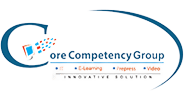How to Create an Effective Employee Training Program
Rohit Kumar
29 Nov, 2024

In today's fast-paced business environment, where change is the only constant, organizations must continuously invest in their employees' development to stay competitive. A well-structured employee training program enhances skills and fosters employee engagement, satisfaction, and retention. This article provides a comprehensive guide for learning and development leaders and HR professionals on designing and implementing an effective employee training program.
Understanding the Foundations of Employee Training
The first step in developing a successful and effective training program is clearly defining your goal. This is done by conducting a thorough needs analysis to identify the gaps between employees' current skills and the skills required to meet business objectives. Training should not be a one-size-fits-all solution but tailored to your organization's and its workforce's specific needs. This could include onboarding for new hires, compliance training, or more advanced programs such as leadership development.
Once the training needs are identified, setting clear, measurable goals is crucial. These goals will guide the structure of the training program and serve as benchmarks for evaluating its effectiveness. The program's success can then be measured by improvements in customer satisfaction scores or a reduction in customer complaints.
Types of training programs
1. Onboarding and Orientation Training
Onboarding is crucial for new hires as it helps them acclimate to the company culture, understand their roles, and become productive team members more quickly. Orientation training typically includes an introduction to the company's mission, values, and organizational structure and an overview of policies, procedures, and critical job responsibilities. A structured onboarding program sets the tone for employee engagement and retention, making it a vital component of any comprehensive training strategy.
2. Compliance Training
Compliance training ensures employees understand the laws, regulations, and company policies relevant to their job roles. This type of training is often mandatory and covers workplace safety, data protection, anti-harassment, and diversity and inclusion. Compliance training helps mitigate risks, protect the organization from legal issues, and foster a safe and respectful work environment. Regular updates and refreshments are necessary to inform employees about regulations or company policy changes.
3. Product and Service Training
For organizations that sell products or services, it's essential that employees, particularly those in sales and customer-facing roles, have a deep understanding of what they are offering. Product training covers the company's products or services' features, benefits, uses, and competitive differentiators. This training helps employees effectively communicate the value proposition to customers, improving sales performance and customer satisfaction.
4. Leadership and Management Training
Leadership training develops the skills and knowledge required to lead teams and drive organizational success. This type of training is not just for current managers but also for employees identified as potential leaders. It covers strategic thinking, decision-making, team management, conflict resolution, and effective communication. Investing in leadership development helps build a pipeline of capable leaders who can lead the organization toward its goals.
5. Soft Skills Training
Soft skills like communication, teamwork, problem-solving, and emotional intelligence are critical for personal and professional success. Soft skills training is often overlooked but significantly improves workplace collaboration, customer interactions, and overall productivity. By enhancing these interpersonal skills, employees can better navigate challenges, work more effectively with others, and contribute positively to the workplace environment.
6. Technical Skills Training
Technical skills training focuses on developing specific technical abilities necessary for employees to perform their jobs. This type of training is essential in industries that rely heavily on technology for their work, such as IT, engineering, and manufacturing. It can include training in new software, tools, or machinery and keeping employees updated with the latest industry standards and practices. Continuous technical skills development ensures that employees remain competent and competitive.
7. Sales Training
Sales training is tailored to enhance the sales team's capabilities by teaching them effective sales strategies, negotiation tactics, and communication skills. This type of training often includes role-playing scenarios, product knowledge, and techniques for handling objections. A well-trained sales team can significantly impact on a company's revenue by closing deals more efficiently and providing exceptional customer service.
8. Diversity and Inclusion Training
Diversity and inclusion training aims to create a more inclusive workplace by educating employees on the importance of diversity, equity, and inclusion (DEI). This training covers unconscious bias, cultural sensitivity, and inclusive communication. By cultivating a culture of inclusion, organizations can benefit from diverse perspectives, improved employee engagement, and a more substantial reputation in the marketplace.
9. Customer Service Training
Customer service training helps employees with the skills to provide exceptional service to clients and customers. It focuses on communication, problem-solving, empathy, and handling difficult situations. Practical customer service training ensures employees can represent the company positively, address customer concerns effectively, and contribute to high customer satisfaction.
10. Health and Safety Training
Health and safety training is critical for ensuring that employees are conscious of potential hazards in their workplace and know how to prevent accidents and injuries. This training is essential in the construction, manufacturing, and healthcare industries, which have higher risks. It includes instruction on safe work practices, emergency procedures, & using personal protective equipment (PPE) correctly. A robust health and safety training program helps reduce workplace accidents and promotes a safety culture.
Developing a Training Program
Step 1: Conduct a Training Needs Analysis
Before diving into the design of your training program, it's essential to identify your organization's specific needs. Gather data through interviews, surveys, performance appraisals, and consultations with department heads. A training needs analysis (TNA) helps pinpoint the skills and knowledge gaps within your workforce that hinder performance or prevent achieving business objectives. Start by asking key questions such as:
- What are the performance issues or challenges that training can address?
- Which specific skills or knowledge are lacking among employees?
- Are there any upcoming changes in the industry or company that require new competencies?
Step 2: Set Clear and Measurable Objectives
Once you've identified the training needs, the next step is to locate & set clear, measurable objectives for the program. The practical training objectives are SMART: Specific, Measurable, Achievable, Relevant, and Time-bound. For example:
- Specific: Increase the customer satisfaction score by 10% within six months by improving communication skills.
- Measurable: Reduce workplace accidents by 20% within a year through safety training.
- Achievable: Enhance leadership capabilities among middle managers by providing them with advanced management training.
- Relevant: Align sales training with the company's goal to expand market share in new regions.
- Time-bound: Complete the onboarding process for all new hires within their first 30 days.
Step 3: Design the Training Program
With your objectives in place, you can begin designing the training program. This involves determining the structure, content, and delivery methods that will best suit the needs of your learners. Key considerations include:
- Content Development: Based on the identified training needs and objectives, develop or curate relevant, practical, and engaging content. Incorporate a mixture of instructional methods, such as videos, presentations, case studies, interactive activities, and real-life scenarios.
- Training Format: Decide on the most appropriate format for delivering the training. Options include instructor-led training, eLearning, on-the-job training, and blended learning approaches that combine online & in-person elements.
- Learning Objectives: Break down the training goals into specific learning objectives for each module or session. These objectives should outline what learners should know, be able to do or feel after completing the training.
- Engagement Strategies: Plan how to keep learners engaged throughout the training. This could involve interactive elements, gamification, group discussions, and opportunities for hands-on practice.
- Assessment and Evaluation: Design assessments to measure learners' progress and the effectiveness of the training. These can include quizzes, practical evaluations, and post-training surveys. Regular assessment will help you refine the program over time.
Step 4: Implement the Training Program
After the design phase, it's time to roll out the training program to your employees. Effective implementation requires careful coordination and communication. Consider the following steps:
- Pilot Testing: Before launching the program company-wide, execute a pilot test with a small group of participants. This will help you to identify any issues or areas for improvement and make necessary adjustments.
- Scheduling: Plan the timing and frequency of the training sessions, taking into account employees' workloads and availability. Ensure that all employees can participate without disrupting their regular duties.
- Resource Allocation: Make sure you have the necessary resources, including trainers, training materials, technology, and support staff. Instruct trainers and participants on accessing and engaging with the training.
- Communication: Clearly communicate the training program's purpose, benefits, and expectations to all participants. Highlight how the training aligns with their personal development and the company's goals. Encourage managers to support their team members' participation.
Step 5: Monitor and Evaluate the Program
Monitoring and evaluating the training program is crucial for understanding its impact & identifying areas for improvement. This process should be ongoing and involve collecting data on both the short-term and long-term outcomes of the training. Key steps include:
- Collecting Feedback: Gather participant feedback through surveys, interviews, or focus groups. Ask about their experiences, the content's relevance, the trainers' effectiveness, and any challenges they encountered.
- Measuring Outcomes: Assess the impact of the training on employee performance and business outcomes. Compare the results against the objectives set in Step 2. For example, if the goal was to improve customer service, track changes in customer satisfaction scores, complaint resolution times, or repeat business rates.
- Analyzing Data: Use the data collected to identify trends, strengths, and areas for improvement. For instance, if some participants struggled with specific topics, you may need to revise the content or provide additional support.
- Continuous Improvement: Adjust the training program as needed based on the evaluation findings. This could involve updating the content, incorporating new training methods, or addressing gaps in the training delivery.
Step 6: Continuously Update and Refine the Program
Training is never a one-time event but an ongoing process. As your organization evolves, so too should your training programs. Regularly revise the content to reflect industry, technology, or company strategy changes. Stay informed about new training methodologies and tools that could enhance your program's effectiveness.
Provide employees with access to ongoing training opportunities to encourage a culture of continuous learning within your organization. These could include refresher courses, advanced training for high performers, or learning resources that employees can access conveniently.
Conclusion
Investing in your employees' development is crucial for success in today's ever-changing business landscape. By following the steps outlined in this guide, you can create a comprehensive and effective employee training program that drives organizational growth and empowers your workforce to thrive. To streamline this process and maximize your training ROI, consider implementing a Learning Management System (LMS) from Core Competency.
Our comprehensive LMS solution allows you to create engaging and diverse learning experiences, including video-based courses, interactive quizzes, and realistic simulations, easily customized using authoring tools like iSpring Suite. We ensure your training programs are accessible to all learners, regardless of their location or device preference, with mobile-friendly and SCORM-compliant content.
With our LMS, you can streamline training processes, track learner progress effortlessly, and gather valuable data to measure learning outcomes and optimize your training strategy.




